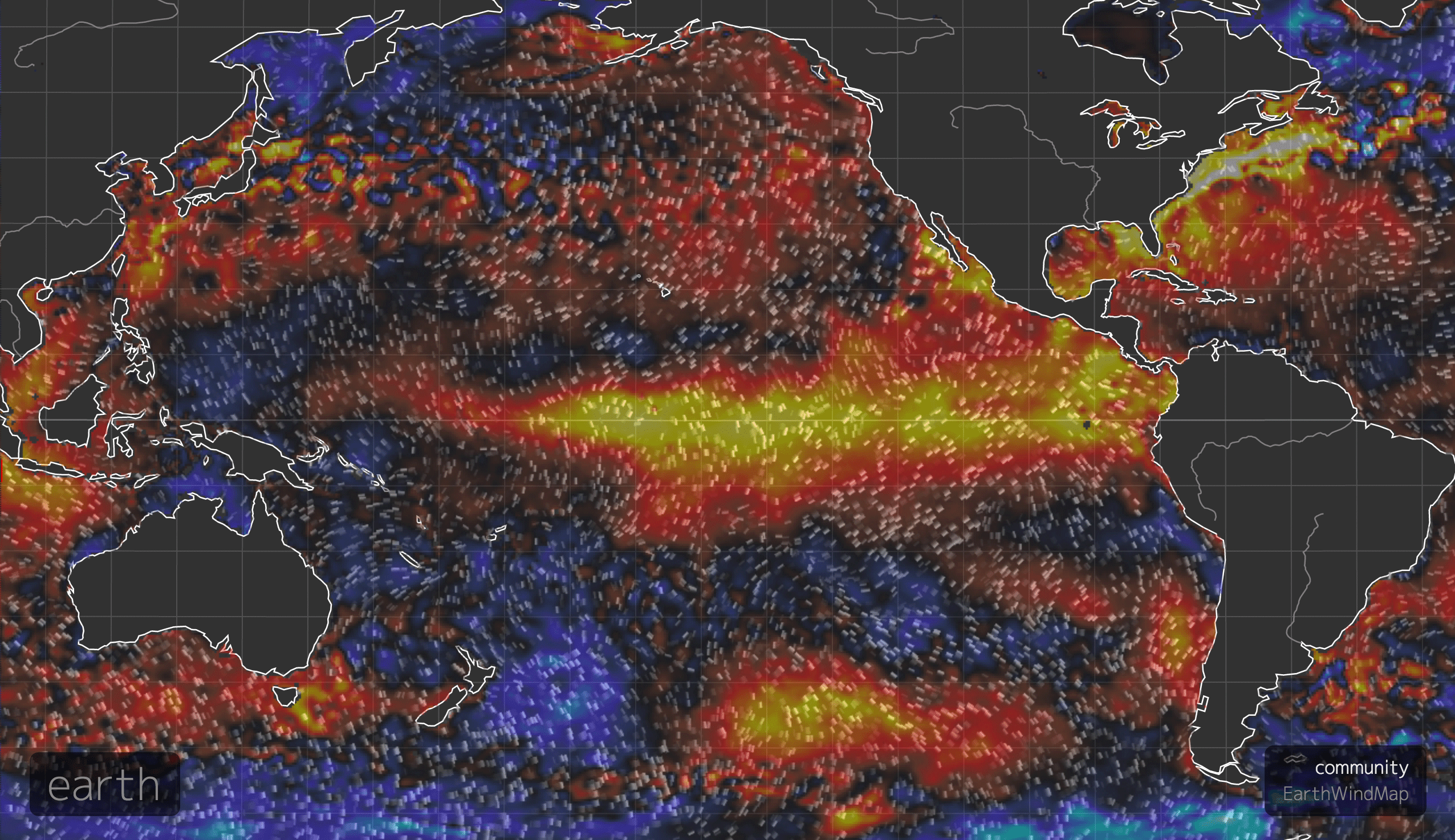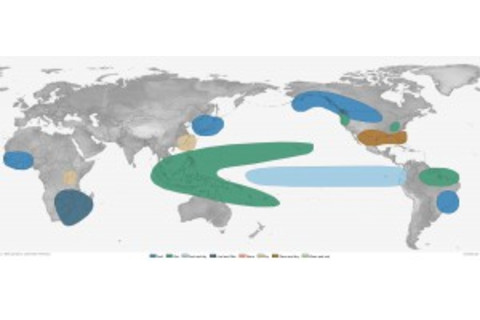A big blob of cold water is rising from the depths in the equatorial Pacific, heralding the likely arrival of La Niña by fall

Sea surface temperatures in the equatorial Pacific have cooled since January, as seen in this animation. The first image shows warmer than normal sea surface temperatures in the central and eastern Pacific along the equator on Jan. 1, 2016. The second shows significant cooling, as of May 12, 2016. (Images: earth.nullschool.net Animation: Tom Yulsman) What a difference a few months make. In January, El Niño was still going strong. But now, not only is it waning but there is a 75 percent chance that its opposite — La Niña — will develop by fall, according to the latest monthly update from the Climate Prediction Center.

Typical impacts of La Niña in winter. (Source: Climate.gov) This is important because both phenomena — the two sides of the El Niño-Southern Oscillation, or ENSO — have powerful effects on the weather. Click on the map at right to see what the odds favor in terms of winter impacts, should La Niña take hold as predicted. The animation at the top of this post shows how sea surface temperatures in the equatorial Pacific Ocean — which are diagnostic of ENSO's two phases — have evolved since early January of this year. On January 1, a large spear of unusually warm water characteristic of El Niño extended along the equator from South America past Hawaii. By today, May 11, a good deal of that anomalous warmth has faded, and a thin, tenuous spear of colder than average surface water is starting to build. We're not in a La Niña yet. Sea surface temperatures in what's known as the Niño 3.4 region are still in warm, El Niño territory. And during April, enhanced storminess lingered over the central tropical Pacific, while it was suppressed north of Indonesia — both hallmarks of El Niño. But the cooling evident in the animation does represent a looming transition to neutral conditions, and later, La Niña. As the Climate Prediction Center's update today put it:
Most models predict the end of El Niño and a brief period of ENSO-neutral by early Northern Hemisphere summer (Fig. 6). The model consensus then calls for increasingly negative SST anomalies in the Niño 3.4 region as the summer and fall progress. However, there is clear uncertainty over the timing and intensity of a potential La Niña . . . Overall, La Niña is favored to develop during the Northern Hemisphere summer 2016, with about a 75% chance of La Nina during the fall and winter 2016-17 . . .
Here's the source of the surface cooling that heralds the likely arrival of La Niña:

A cross-section of the equatorial Pacific Ocean shows how the temperature of the subsurface water compared to the 1981-2010 average during the period May 1-5, 2016. The mass of blue represents water that was 2 to 4 degrees Celsius cooler than normal at depths between 100 and 200 meters. (Source: Climate.gov figure by Fiona Martin, based on data from the Climate Prediction Center) In the cross section above of the equatorial Pacific (with Australia and Indonesia toward the left and South America toward the right), you're looking at a big, fat blob of cold water extending down about 200 meters. It remains below the surface across much of the Pacific. But in the east, it has surfaced. (See the upper right corner of the image.)

Cross section showing temperature anomalies at depth in the equatorial Pacific. (Source: Climate Prediction Center) Click on the image above to launch an animation showing the evolution of the big, blue blob from March 9 to May 8. Keep your eyes on the upper right corner. Here's where the cold blob makes it to the surface, displacing the warm water. NOAA's terrific ENSO Blog has more details and graphics in a story headlined, "May 2016 El Niño/La Niña update: Switcheroo!" Check it out here.













